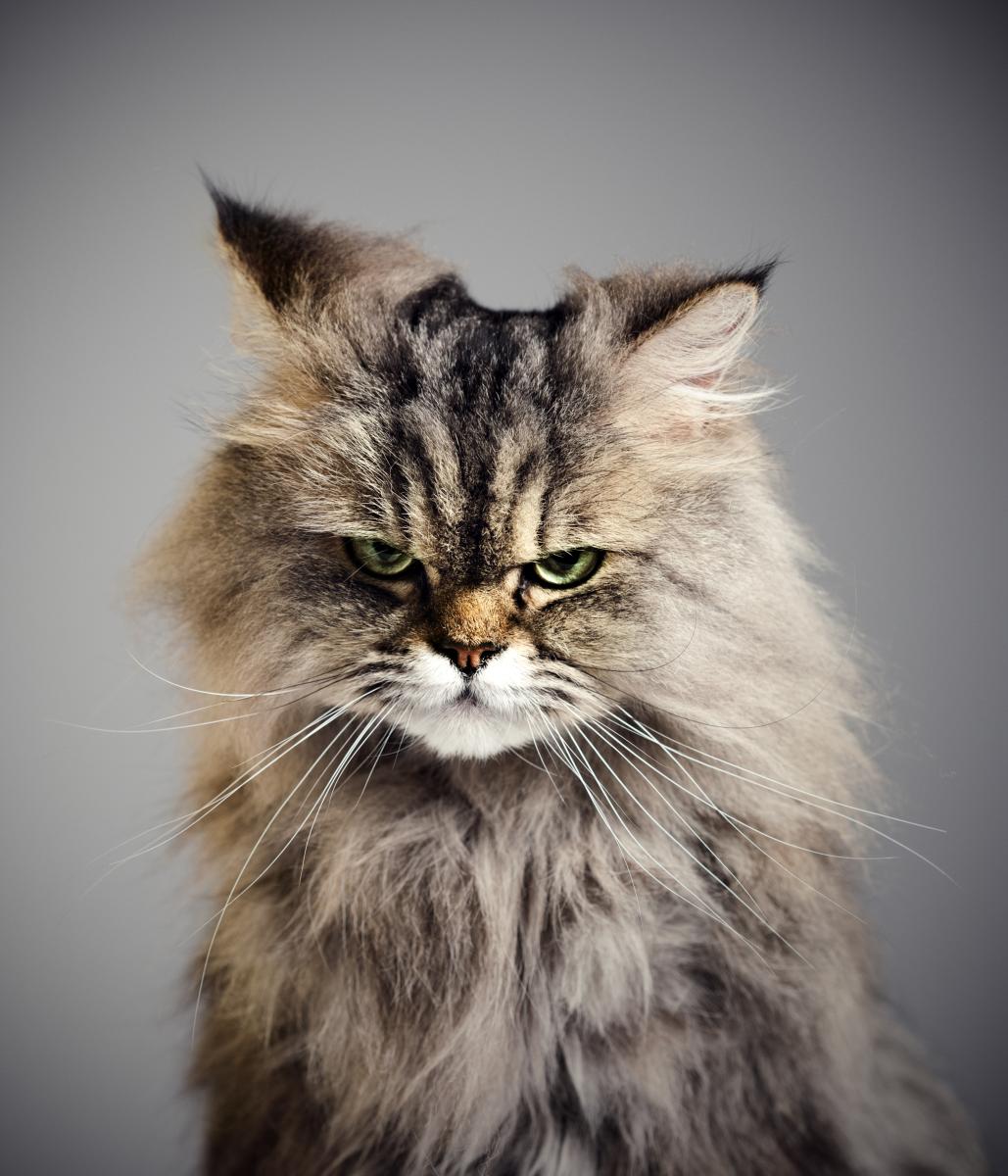Could You Identify a Cat’s Mood Through Its Facial Expressions?
 If you’ve ever tried to interpret how your pet cat is feeling, you’re not alone. This mystery of feline mood is what motivated University of Guelph researcher Dr. Georgia Mason to investigate whether people can accurately identify how cats are feeling based on their facial expressions, a topic that has attracted very little research in the scientific community until recently.
If you’ve ever tried to interpret how your pet cat is feeling, you’re not alone. This mystery of feline mood is what motivated University of Guelph researcher Dr. Georgia Mason to investigate whether people can accurately identify how cats are feeling based on their facial expressions, a topic that has attracted very little research in the scientific community until recently.
After years of speculating that she’s been able to interpret her three cats’ facial cues, Mason wanted to scientifically put others’ ability to decode cat expressions to the test. While research has shown many animals like mice, rats, pigs, horses and rabbits have strikingly similar facial expressions when they are in pain, minimal investigation has been done on the topic of pet cats, a creature with a well-known reputation of being mysterious and difficult to decipher.
Mason collaborated with Ontario Veterinary College (OVC) professor Dr. Lee Niel, and postdoctoral researchers Lauren Dawson and Jenna Cheal, to develop an online survey where more than 11,000 participants watched short video clips of close-up cat faces as they experienced various positive and negative situations.
The study revealed most participants were not successful at judging whether a facial expression was “positive” or “negative.” However, participants were more likely to do well on the survey if they were a woman, a young millennial or a veterinary professional. Of the thousands of participants, 13 per cent achieved an “excellent” score by correctly identifying between 15 and 19 of the 20 videos they viewed.
“Interestingly, being a cat owner or cat lover (93 per cent of people who did the survey had lived with a cat as an adult) did not help participants better read cats’ facial expressions,” Mason explains. “Our study revealed that professional veterinary experience, not personal experience or feelings, was a key to success and in general, people were better at reading cats in a positive situation compared to a negative one,” she adds.
This study may open the door to explore exactly how cats’ faces reveal their emotional states and allow for the development of tools that would help more people become better at understanding them.
 “Cats are sending us subtle signals that a lot of us likely miss and having the skills to accurately interpret how they’re feeling might mean we’re also able to better understand their needs and preferences both at home and during veterinary care,” says Niel, adding that we know from previous research that cats are taken to the veterinarian less often than dogs and are handled differently during exams.
“Cats are sending us subtle signals that a lot of us likely miss and having the skills to accurately interpret how they’re feeling might mean we’re also able to better understand their needs and preferences both at home and during veterinary care,” says Niel, adding that we know from previous research that cats are taken to the veterinarian less often than dogs and are handled differently during exams.
The researchers hope that one day we will be able to identify specific signs and facial cues to look for to assess positive and negative welfare in cats. In the same way posters in veterinary hospital settings depict body condition scoring to inform about healthy weight, maybe one day we will have something similar for facial expressions.
“Ultimately having the ability to understand feline facial cues can help both pet owners and veterinary staff improve the health and welfare of cats,” says Mason.
To test your own cat-reading abilities, join the more than 400,000 people who have taken the research team’s interactive quiz: uoguel.ph/catfacequiz.
Dr. Georgia Mason is the Director of The Campbell Centre For the Study of Animal Welfare (CCSAW) at the University of Guelph and a Professor in the College of Biological Science’s Department of Integrative Biology.
Mason and Niel’s study has been featured in national and international media outlets including National Geographic, The Washington Post, Daily Mail, Real Time with Bill Maher, CBC, CTV and more.

